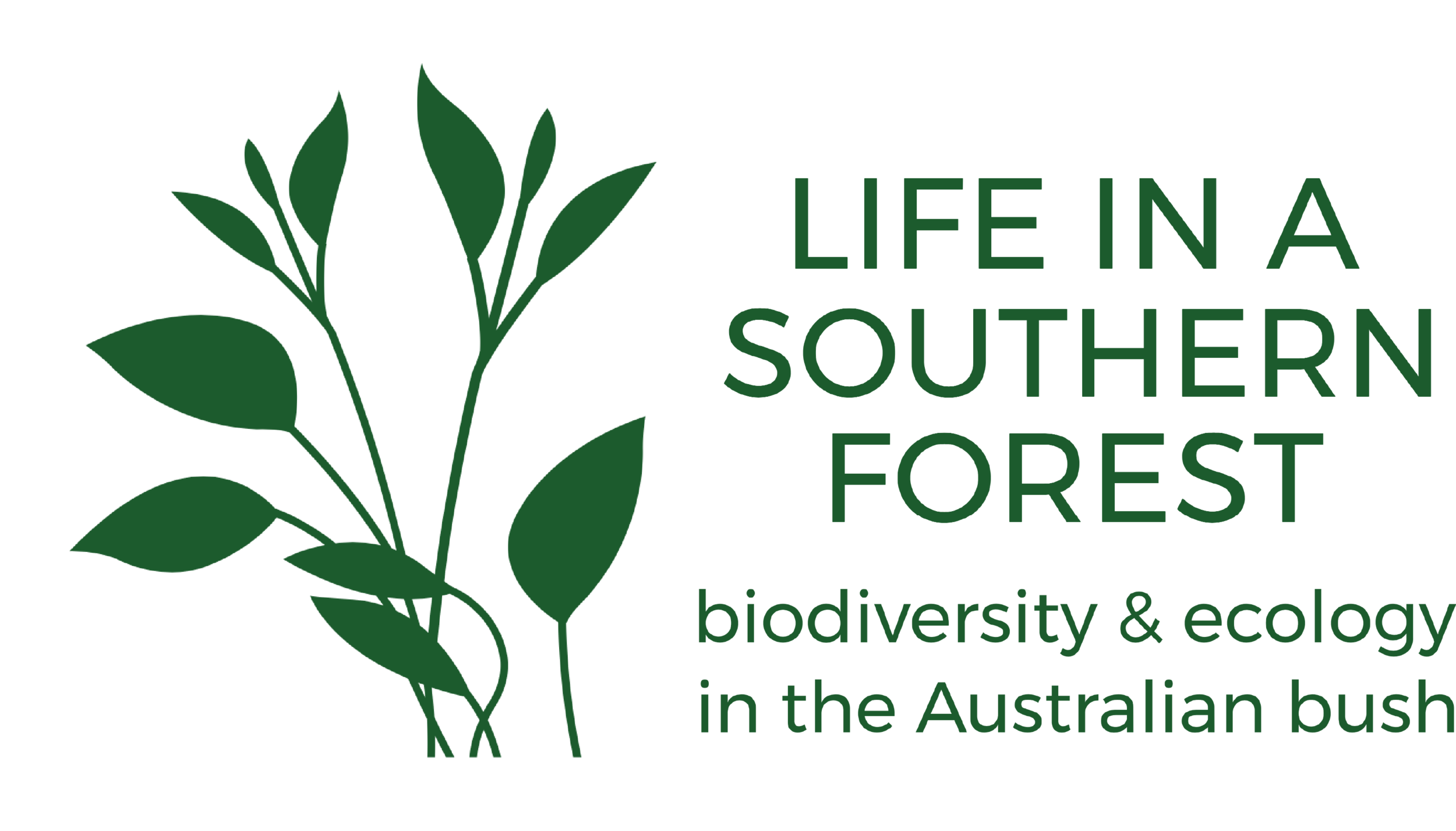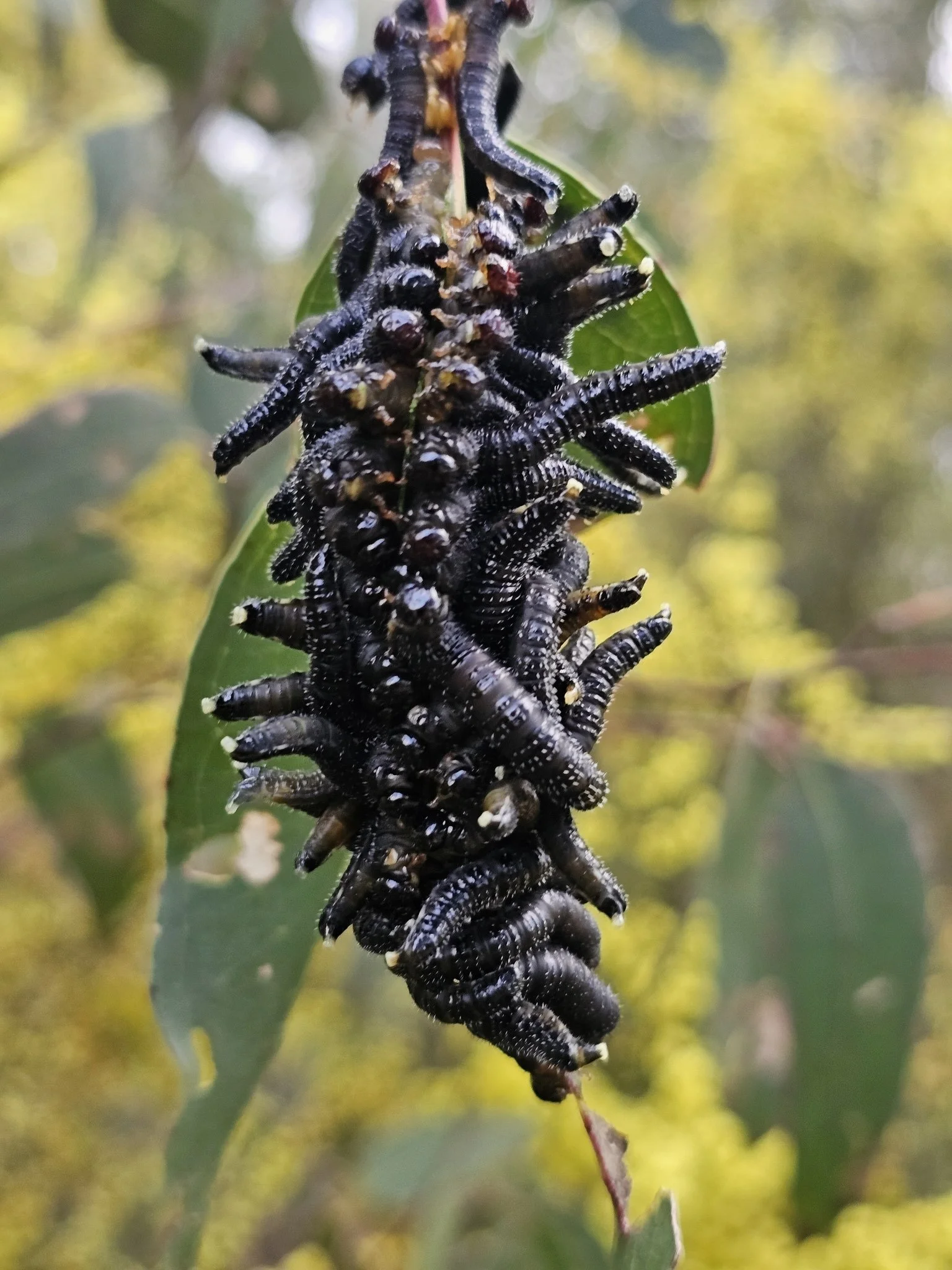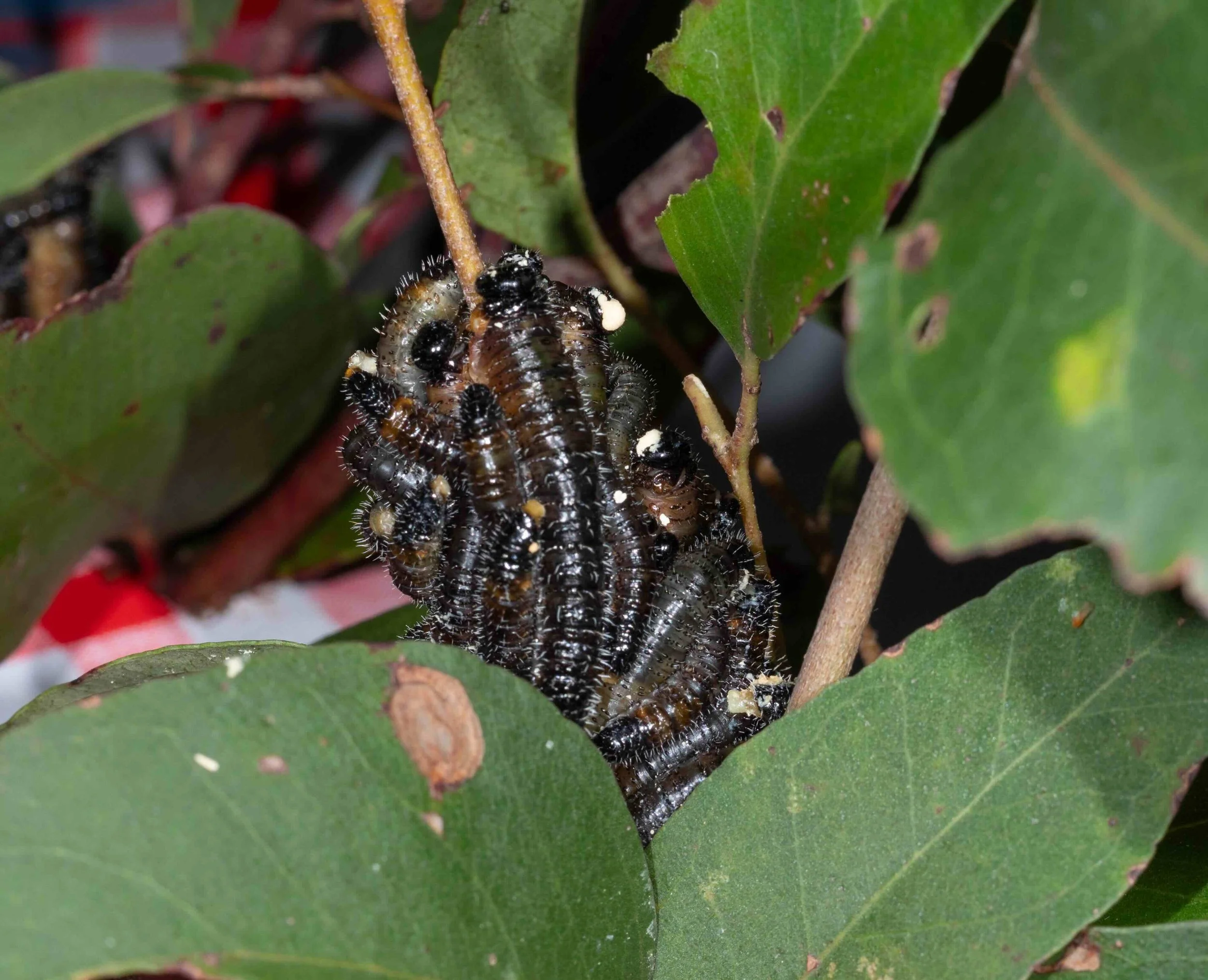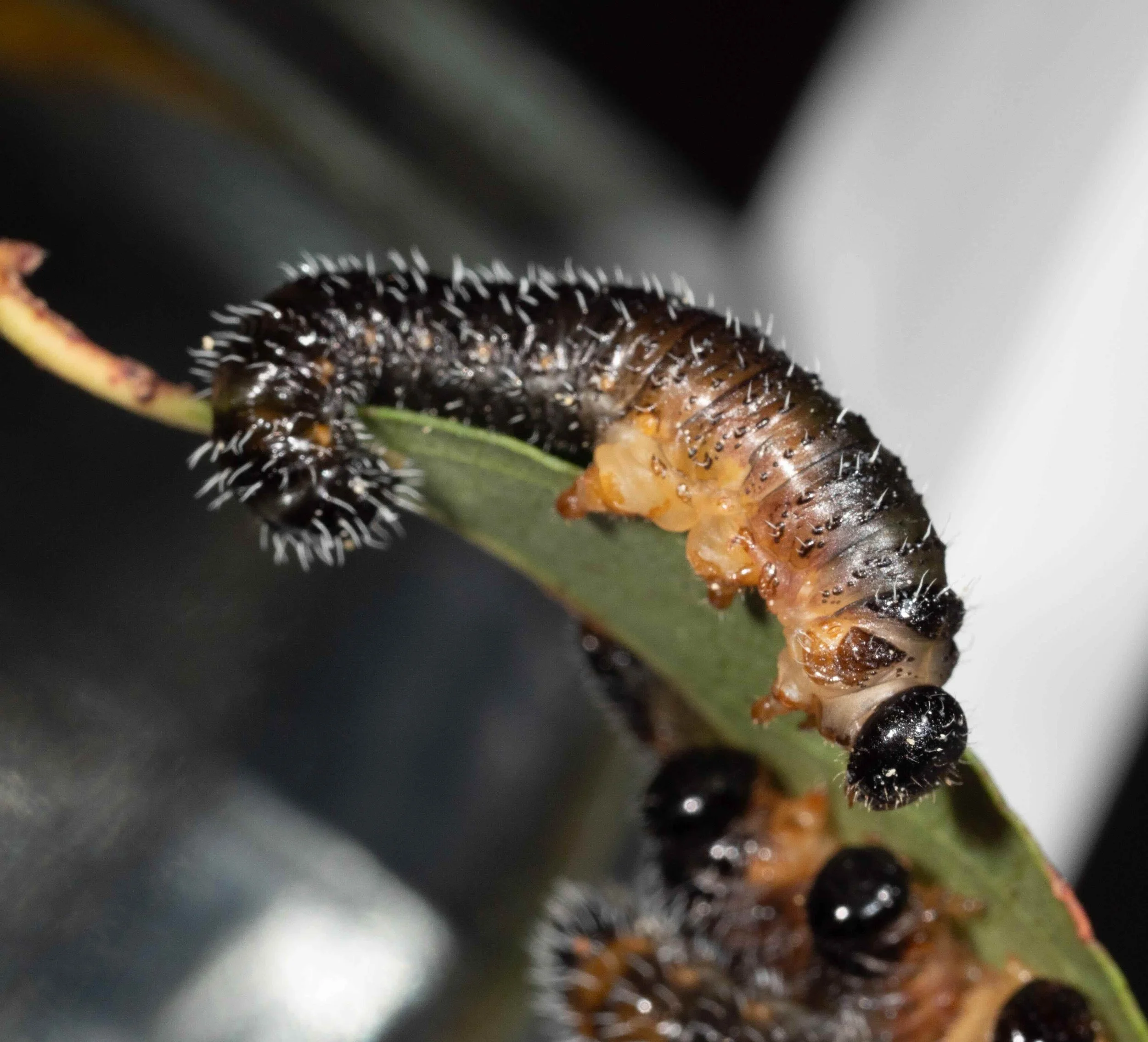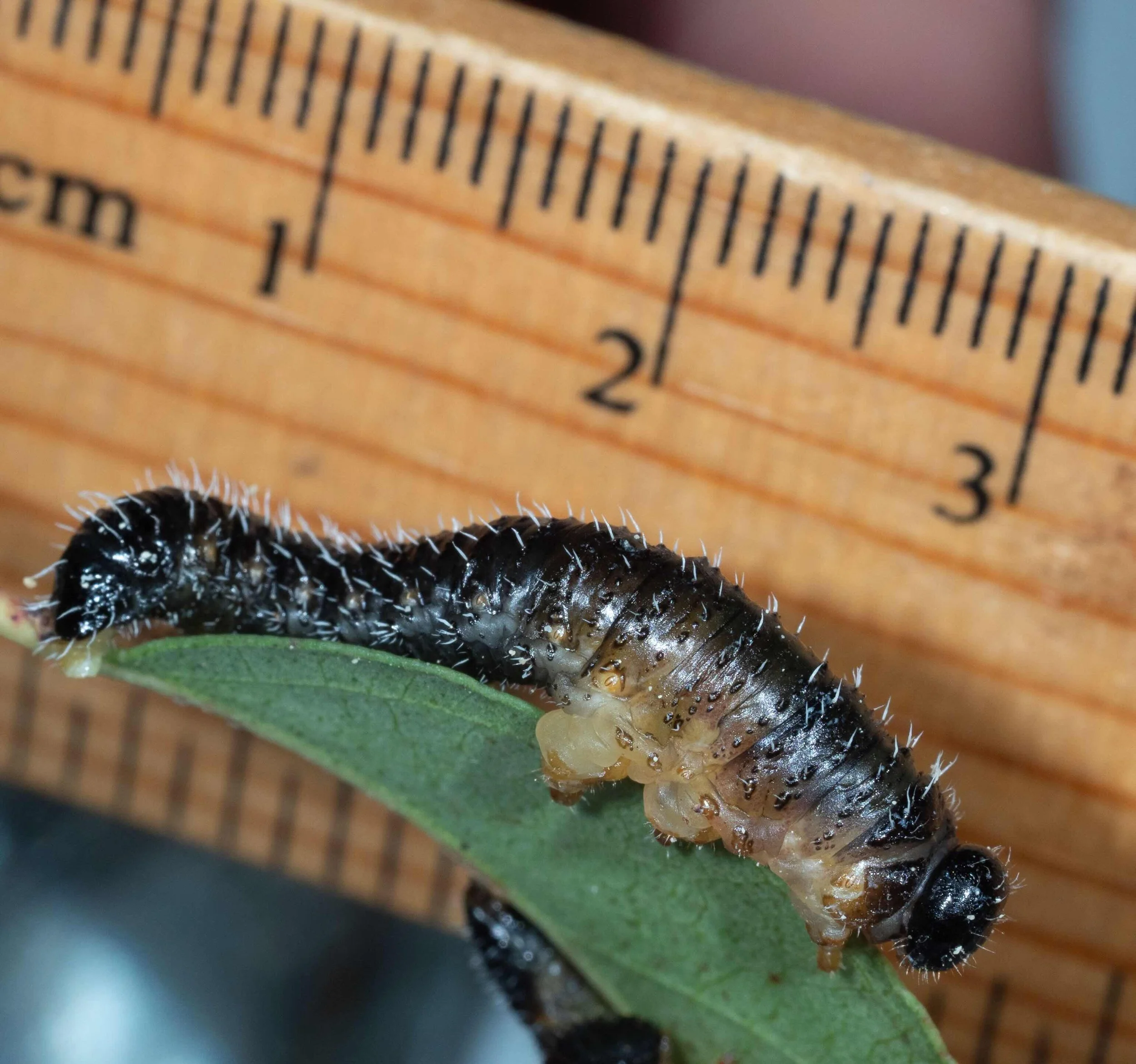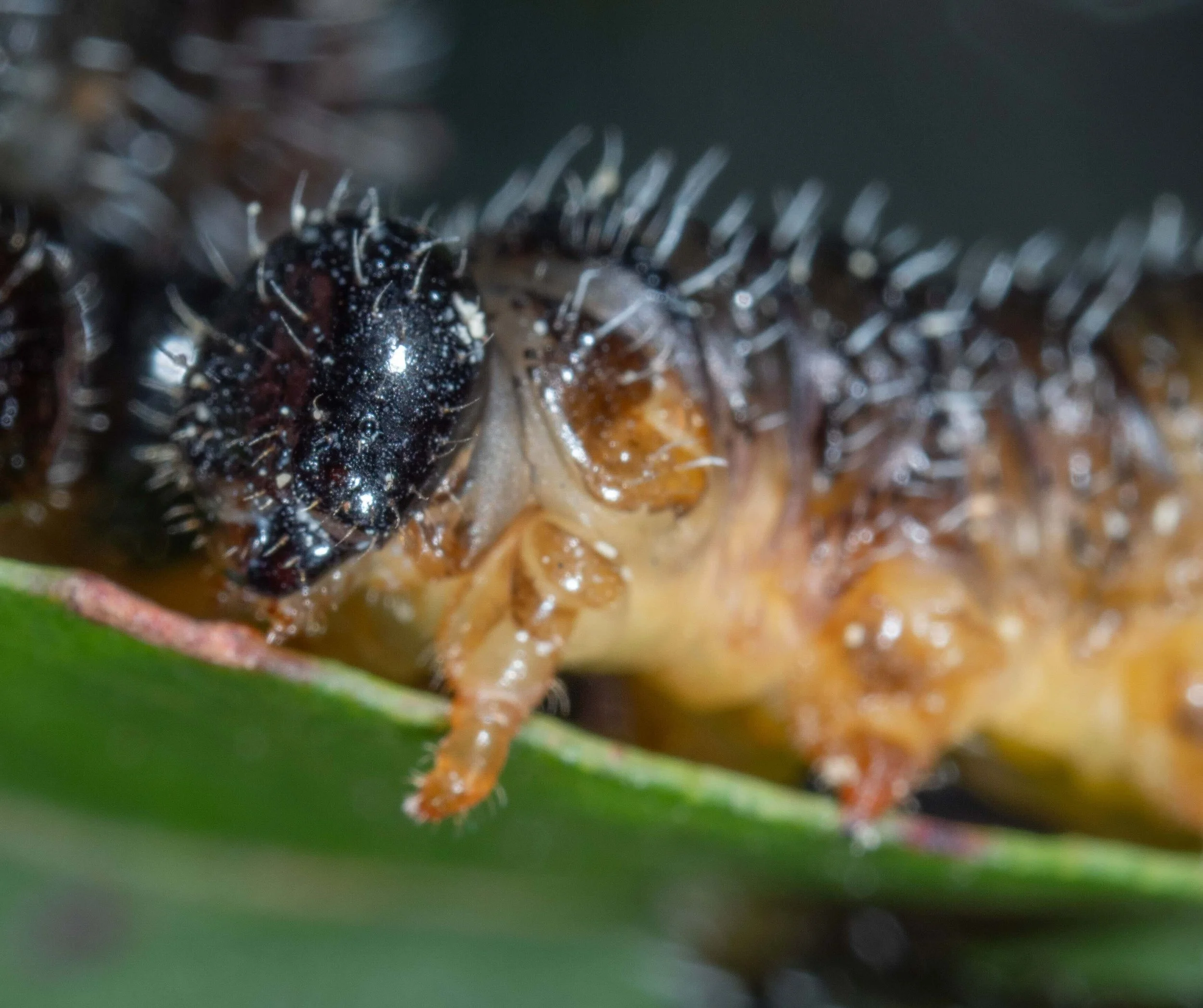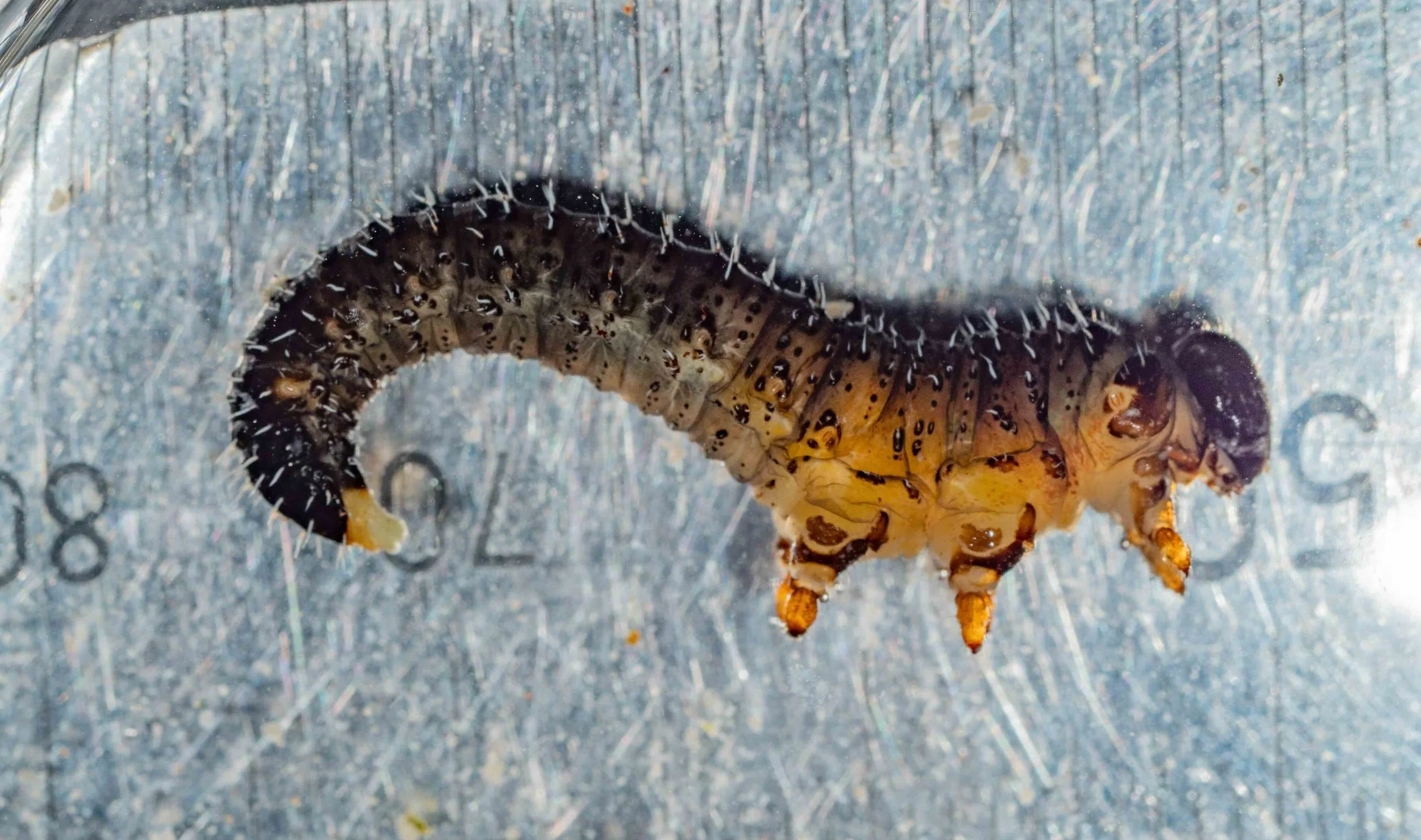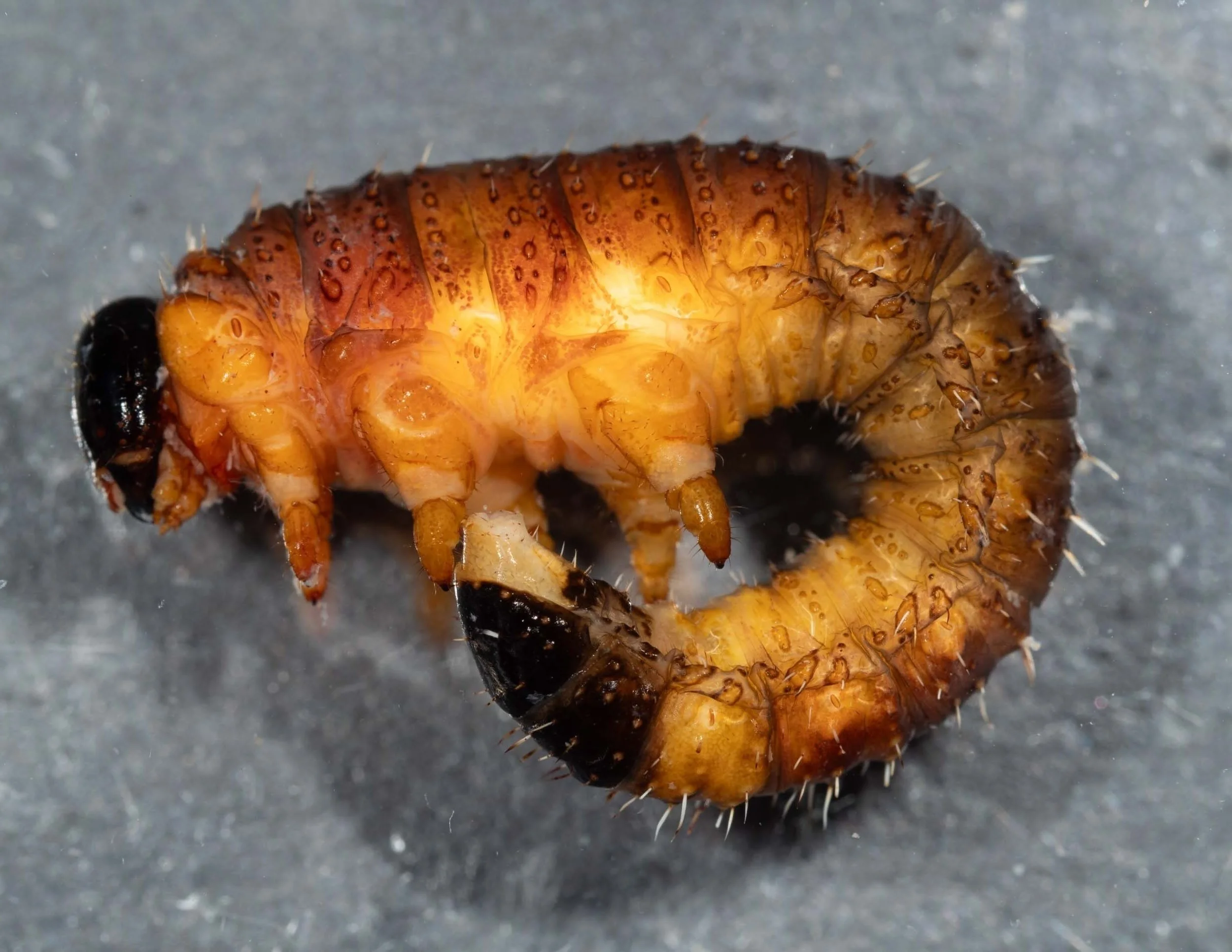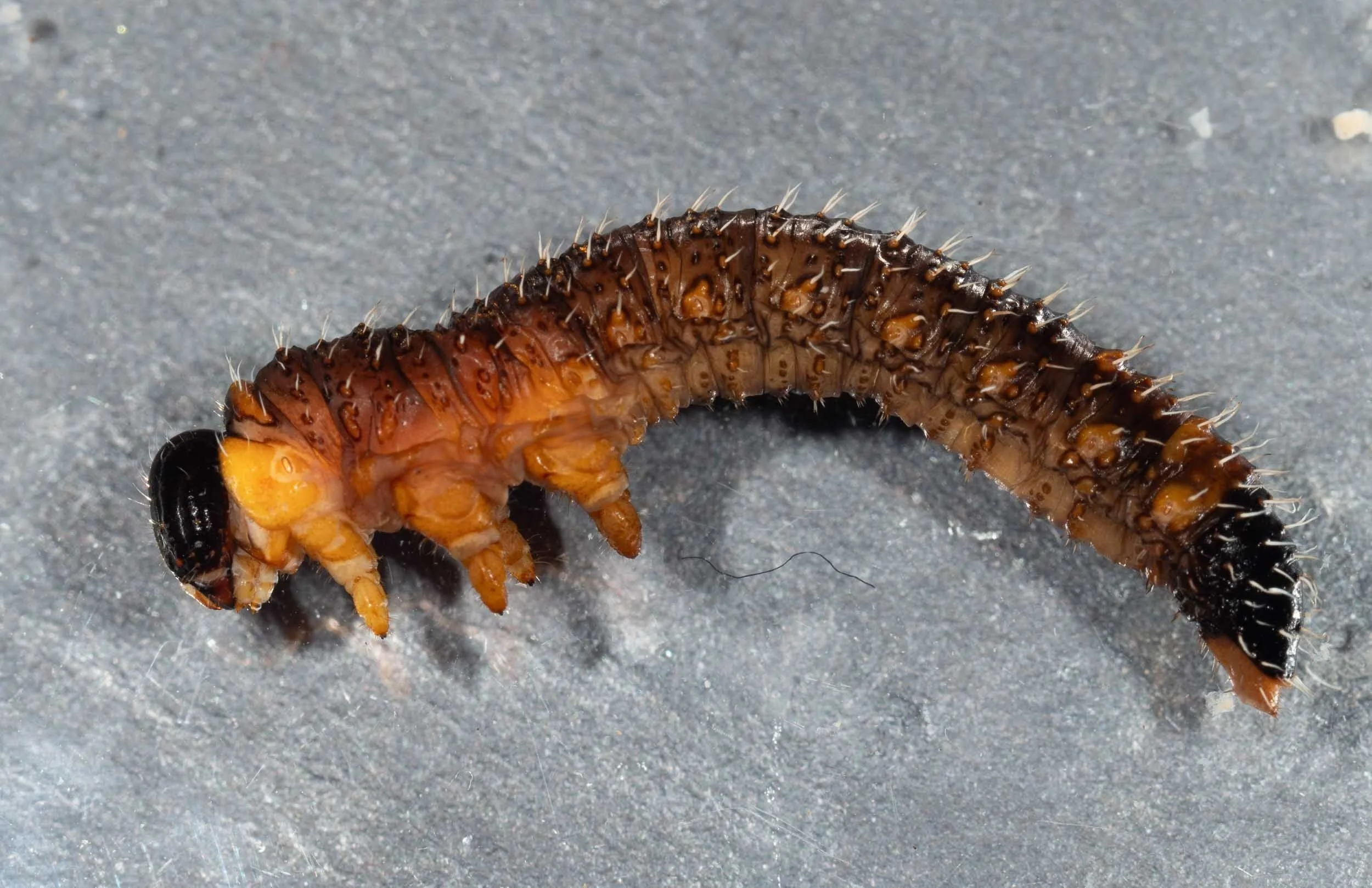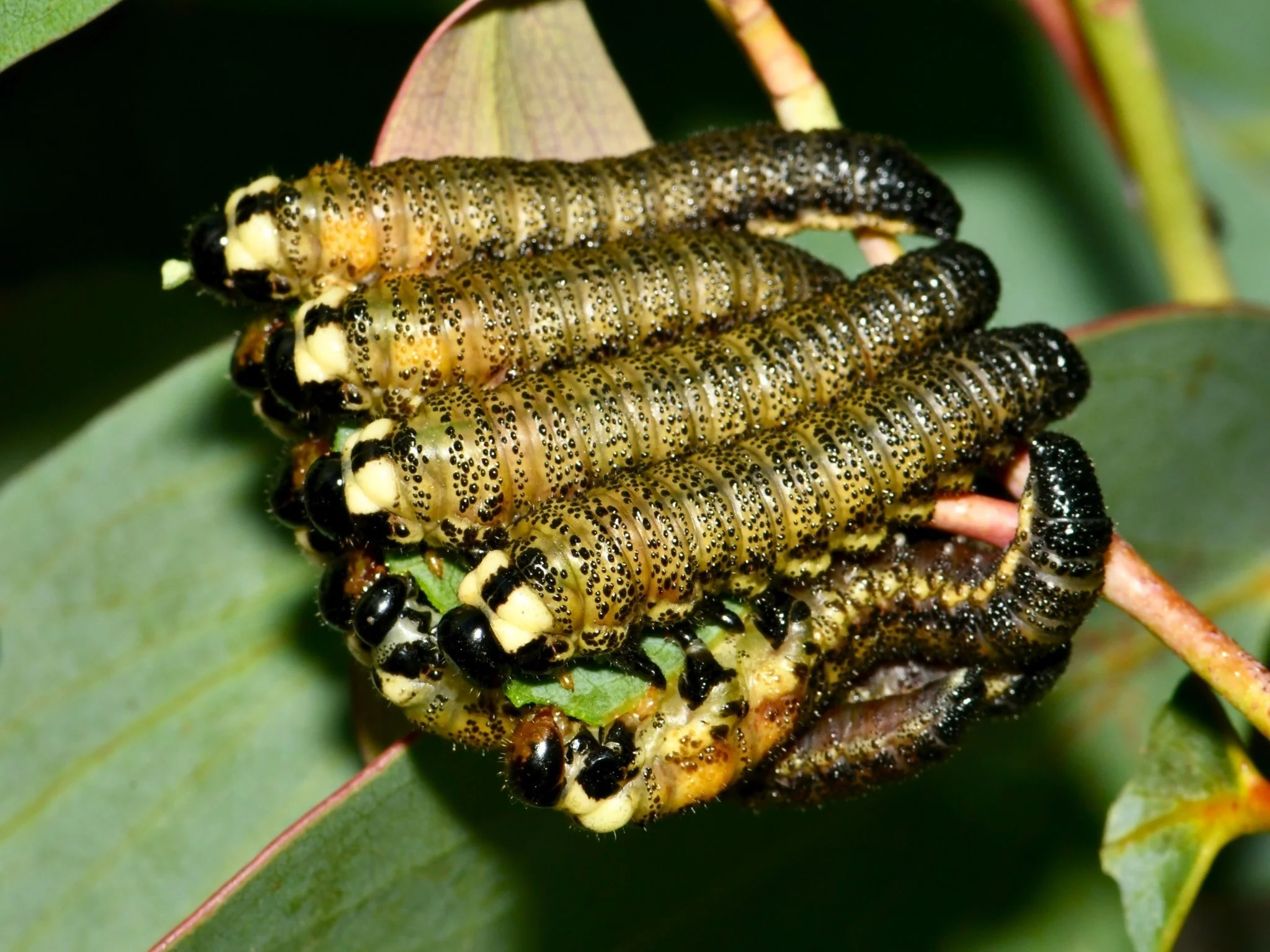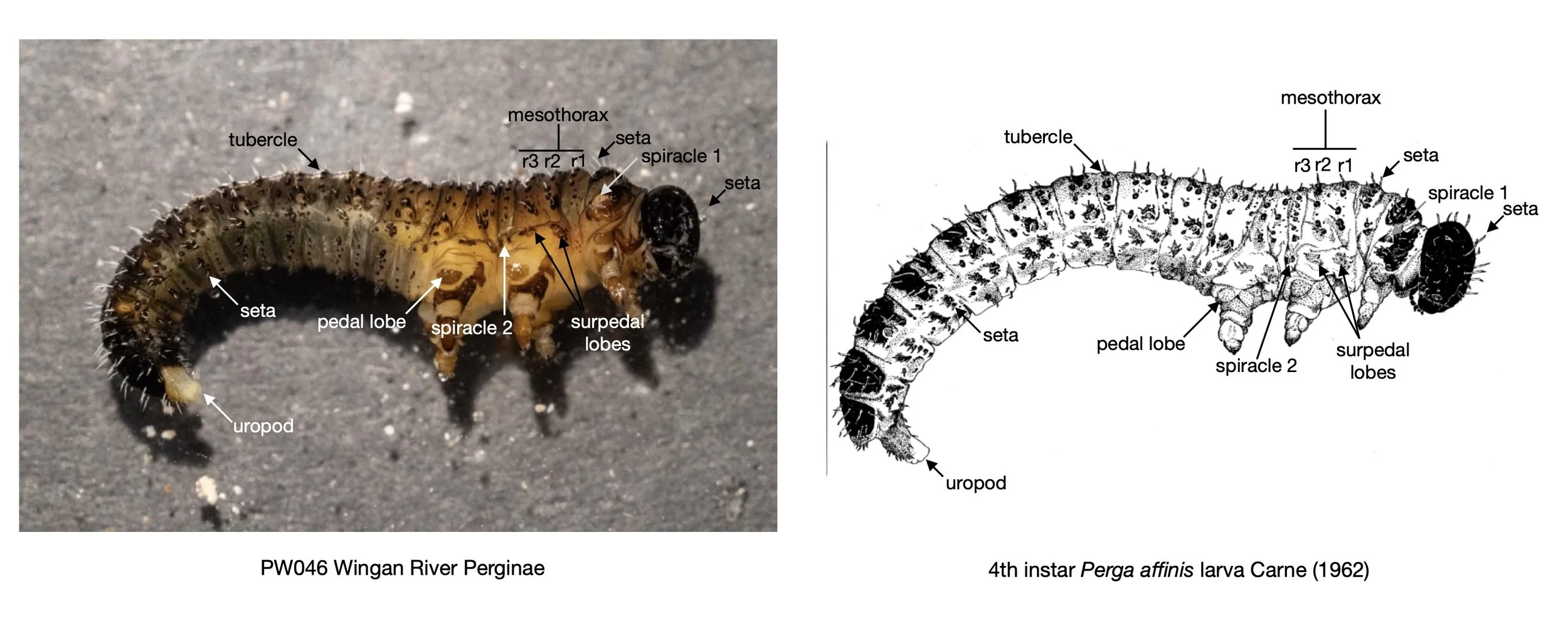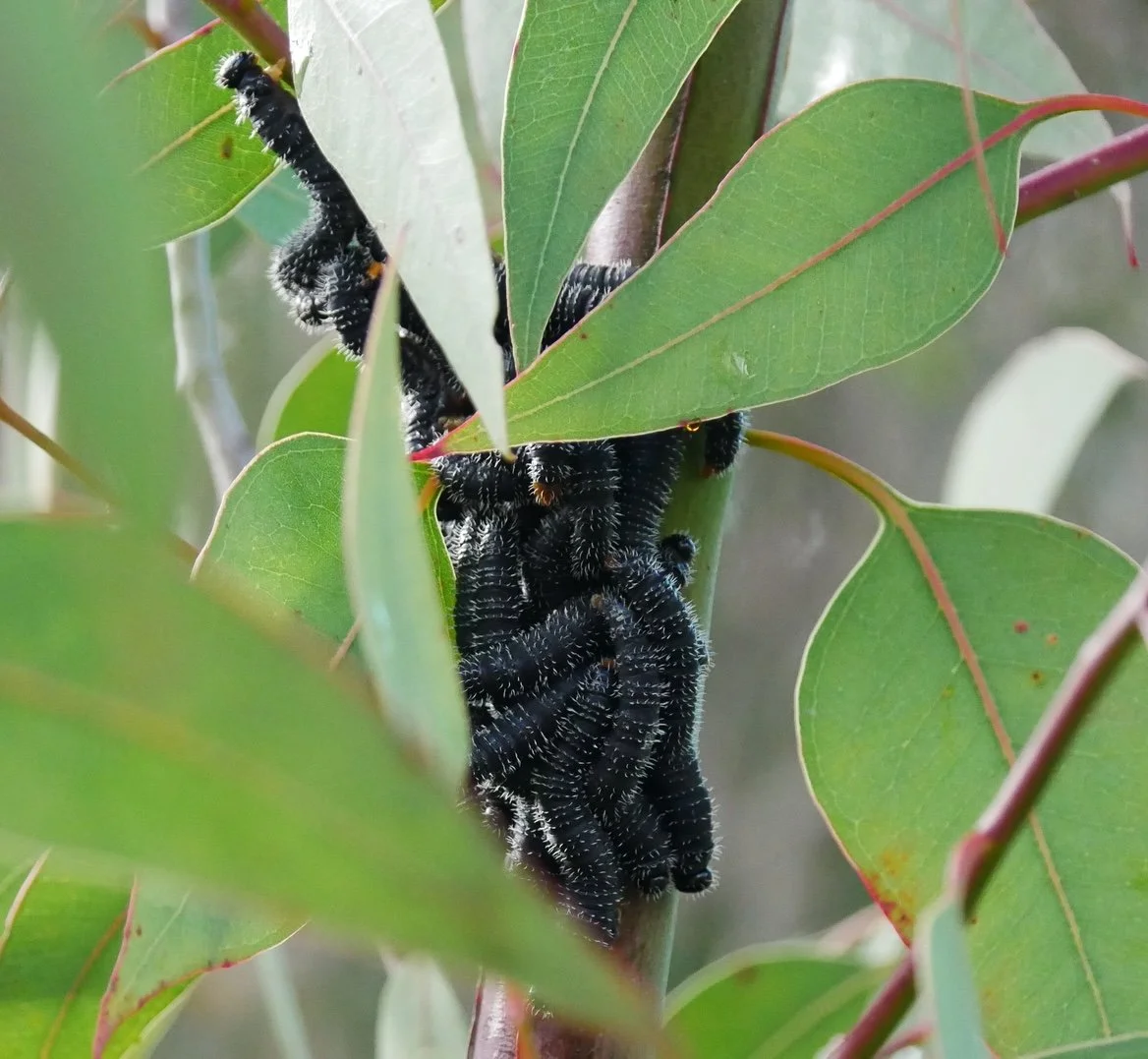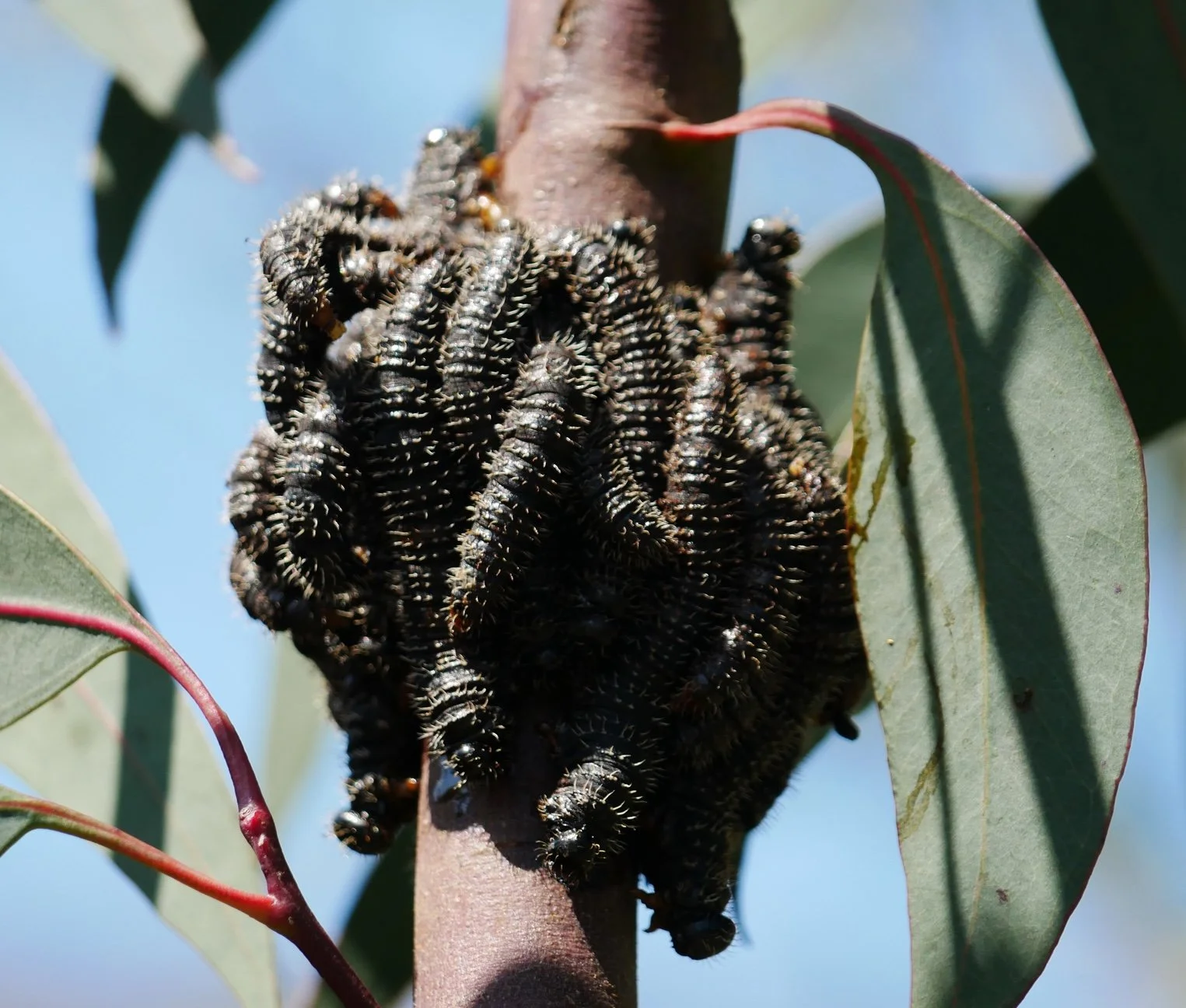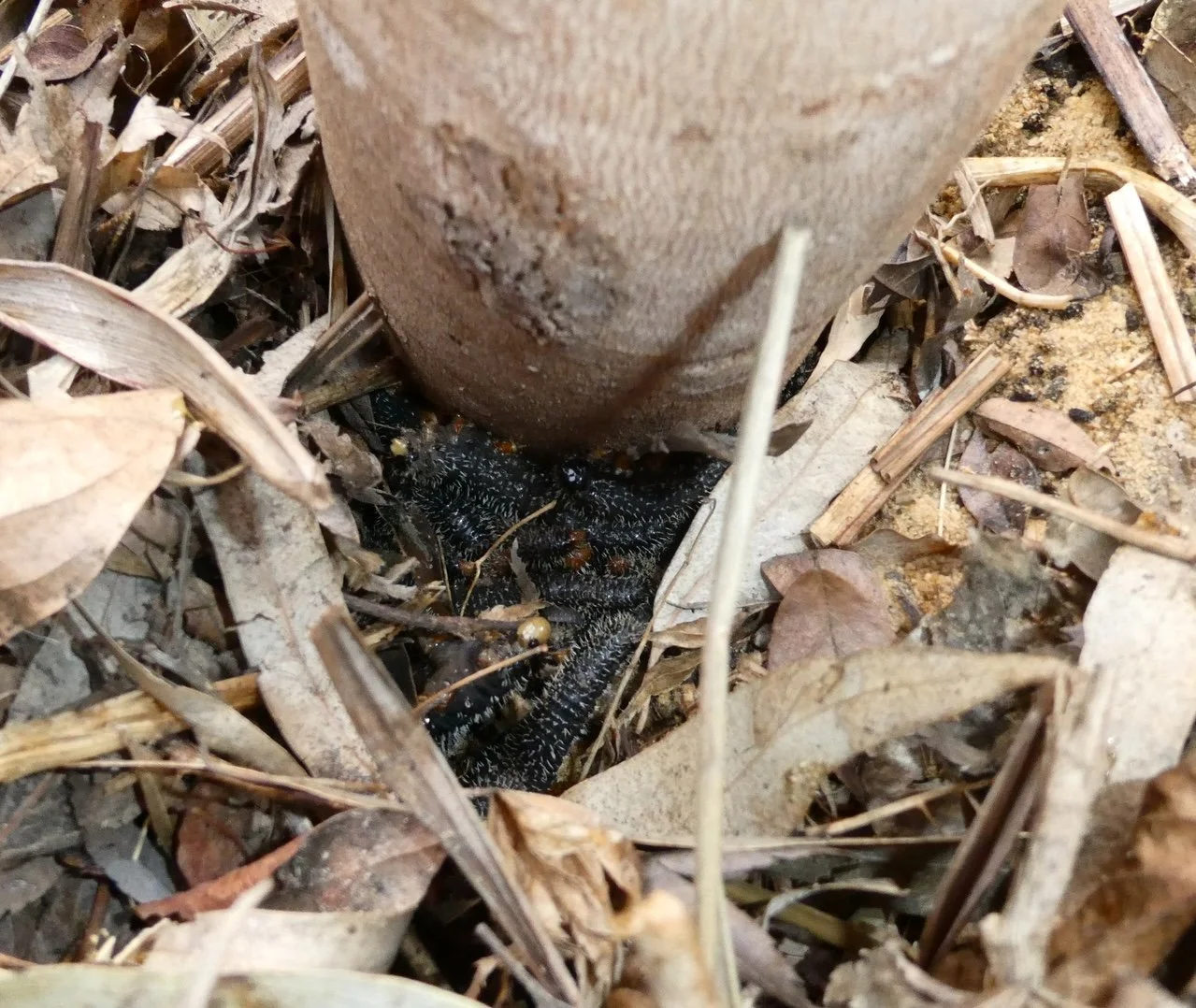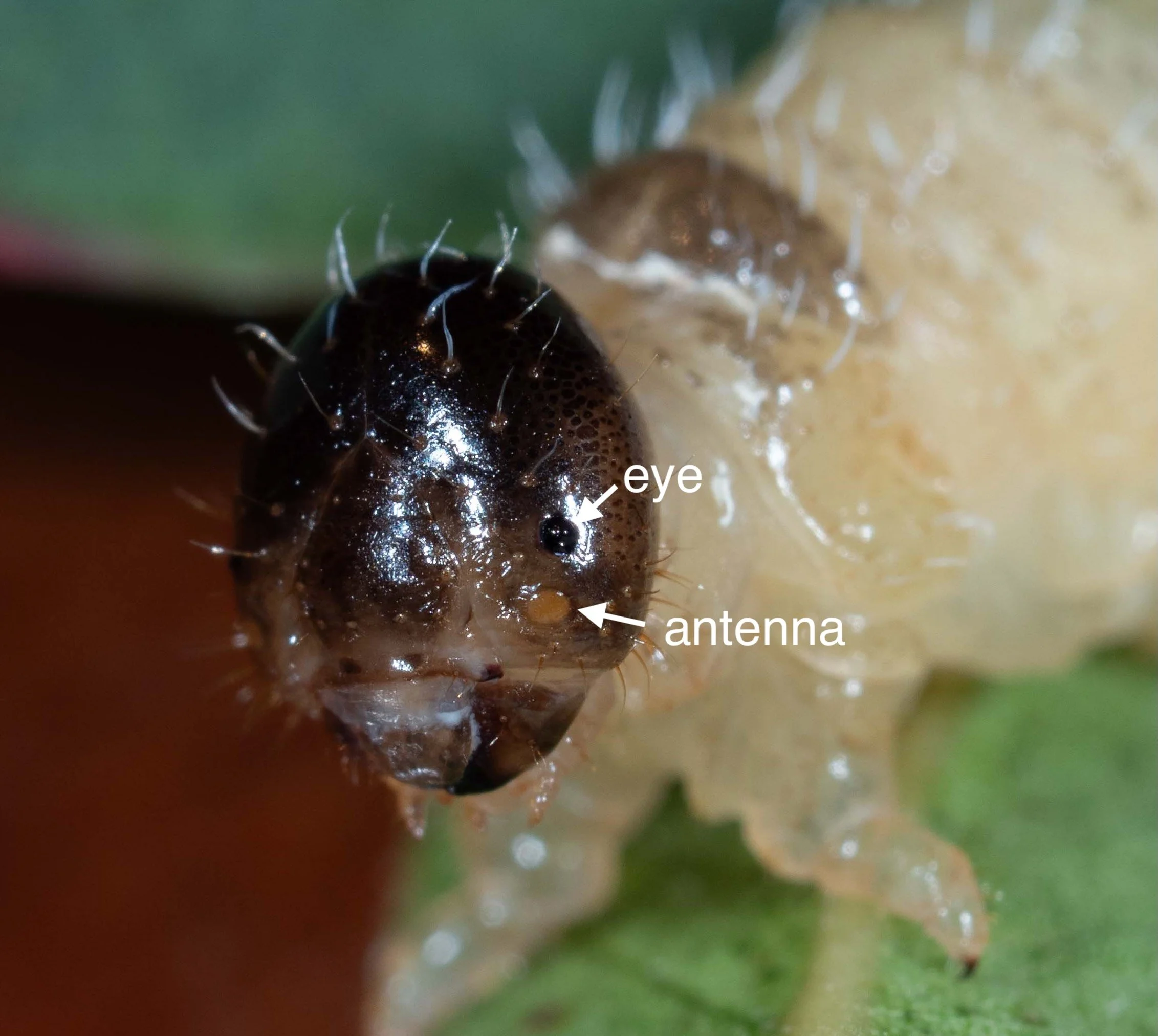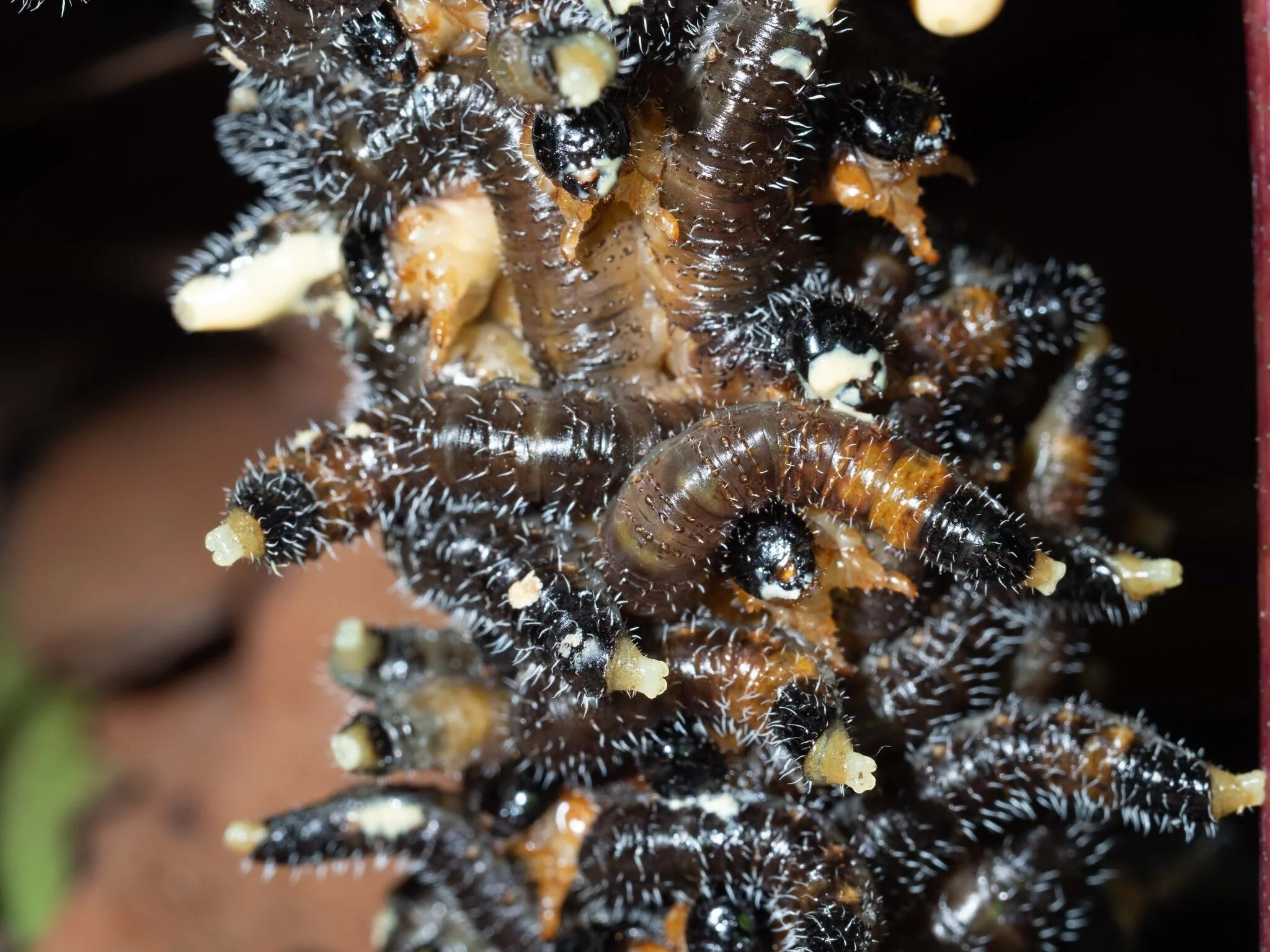Perginae larvae batch 1
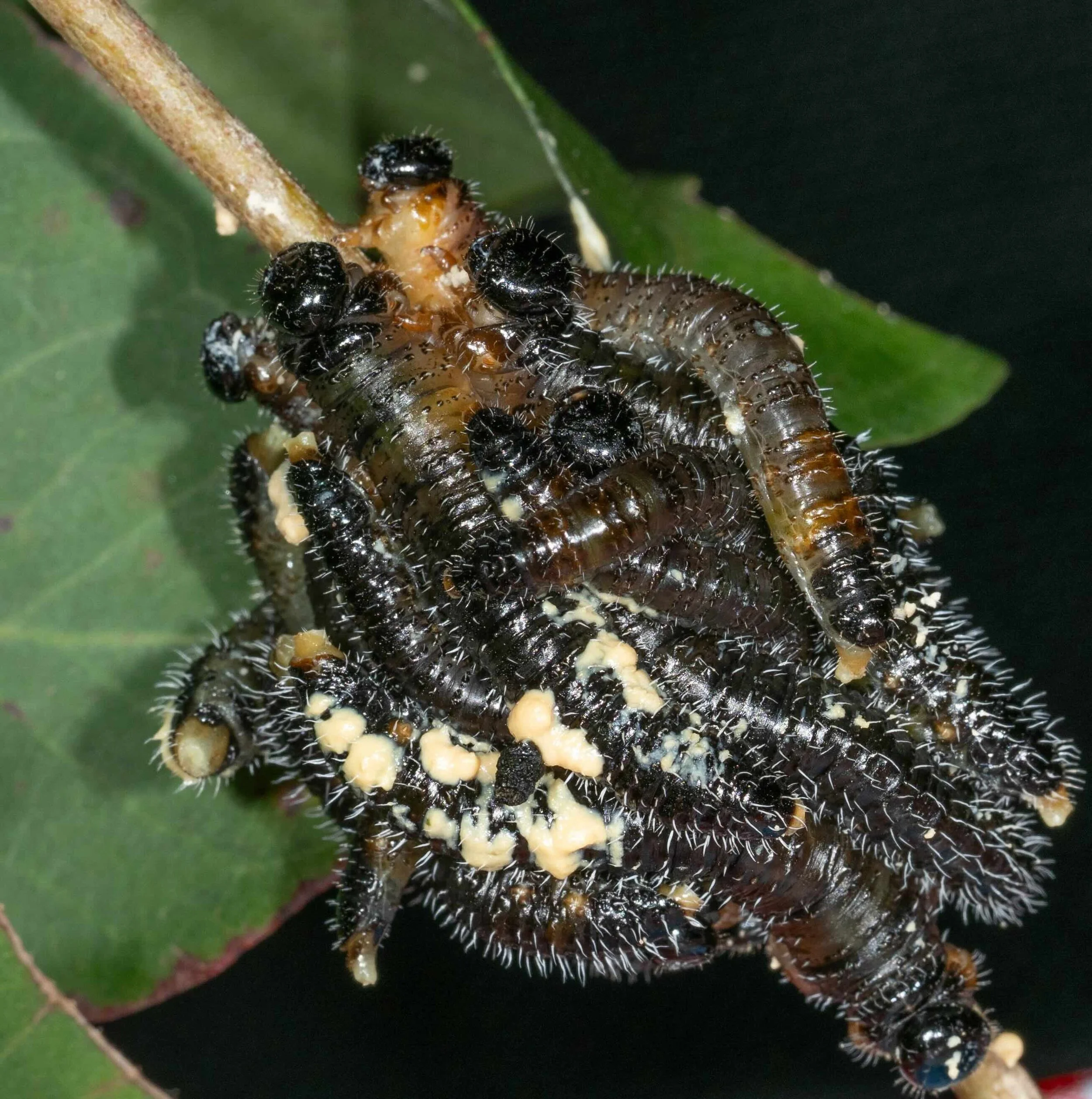
Workbook
This is the first collection of Perginae larvae which I am aiming to rear through to adult stage.
My goal is to obtain female Perga dorsalis adults for COI barcoding in order to determine whether Perga dorsalis and Perga affinis individuals identified morphologically have different barcodes.
Collection of larvae near Wingan River - 10th September, 2025
On 9th September, 2025 I discovered an iNaturalist observation of black Perginae larvae at Wingan River on Princes Hwy.
On 10th September we drove down to that location and discovered a small eucalypt sapling with several clusters of black Perginae larvae, on a track leading to a farm gate, about 200m west of that iNaturalist observation.
Here is my iNaturalist observation of those larvae - “Wingan River larvae”.
We collected those larvae, returned to Wonboyn and placed them in the insect cage with bunches of eucalypt leaves (E. sieberi and E. globoidea) collected from saplings on our property. I estimate there are around 50 larvae in this collection.
The larvae formed 2 or 3 tight clusters on vegetation taken from their home tree. In the evening they moved onto the introduced vegetation and began actively feeding.
The next morning they had reformed clusters on or close to their original vegetation.
Morphology of Wingan River larvae compared to other Perginae larvae
I removed a larvae and fixed it in 80% ethanol for a voucher specimen - #PW046
I compared this Wingan River individual to a voucher specimen of Pseudoperga ferruginea (#PW015, iNat observation), which was taken from a cluster of larvae laid by a female on Eucalyptus globoidea vegetation in late February, 2023 (iNat observation) and to specimen #PW016 of a Perginae larva collected from a eucalypt sapling near the Biolytix tank at the same time.
PW016 Perginae larva in eucalypt sapling near Biolytix tank
PW016 is very similar to PW015, suggesting it is also a Pseudoperga ferruginea larva.
Both larvae are similar to PW046 from the Wingan River collection, although the legs and the prothoracic pleurae (latero-tergal lobes) of the latter have dark patches not present in the P. ferruginea larvae.
The Wingan River larva is also different in appearance to larvae seen in iNat observations (e.g this one) at Mt. Buller during a hill-topping event where many female P. guerinii were seen laying eggs and guarding clutches of larvae.
Another candidate for the Wingan River larvae is Pseudoperga lewisii. This page from the Tasmanian Insect Field Guide shows photos and videos of late stage Pseudoperga lewisii larvae from Hobart which look similar to the Wingan River larvae.
Wingan River larvae are very similar structurally to Perga affinis larvae
The Wingan River larvae are very similar to drawings and descriptions of Perga affinis affinis larvae in Carne (1962) and Tait (1962). I can find few if any structural features to separate them. However they are much smaller - 28m vs. up to 60-80mm.
Comparison between Wingan River Perginae larva and 4th instar Perga affinis larva (from Carne, 1962)
Late instar larvae from a clutch which were raised to adult stage - iNaturalist observation by Chris Seager - and COI barcoded are shown in the photos below.
Moulting of Wingan River larva
Second larva removed from Wingan River clutch on 11/9/25. It moulted shortly before 8:07pm that evening.
Two hours later, the dorsal cuticle had darkened significantly and this colour change had spread to the thoracic segments by the next morning. The larva was returned to the cage that morning.
13th September afternoon
Larvae move as a cluster along a stem.
18th September
Foam block in plastic box added to cage, surrounded with leaf litter to top of box. They fed normally over the following fortnight, resting in one or two clumps around a stem during the day, dispersing in the late afternoon to feed overnight then coming together again in the early morning.
26th September
5:25pm shortly after the photo below was taken the larvae moved from the vegetation and buried themselves in the leaf litter at the bottom of the cage.
The next day they had moved back to the vegetation and resumed feeding in the late afternoon in the normal way.
21st October
7:30am All of the larvae had disappeared from the vegetation.
3:00pm 15 dead larvae were found beneath the cloth lining the cage floor, along with a cluster of 20 living larvae in a corner of the cage. The latter were transferred to a dish containing a mix of peat moss and vermiculite. The larvae buried themselves, disappearing from view.
27th October
The contents of the dish were upended to discover if the larvae had continued developing. The medium was full of threads of cocoons, indicating they had begun to pupate. Prepupae and larvae apparently making a cocoon were found (photos below). The medium was replaced and the clutch left undisturbed inside a cage in the hope they would continue developing.
This is a workbook page … a part of our website where we record the observations and references used in making species identifications. The notes will not necessarily be complete. They are a record for our own use, but we are happy to share this information with others.
